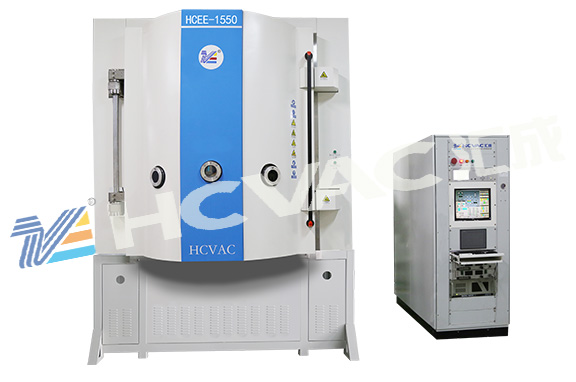Optical vacuum coating machine can be divided into reflective film, antireflective film/antireflective film, filter, polarizer/polarizing film, compensation film/phase difference plate, alignment film, diffusion film/sheet, brightening film/prism film/condenser, black-and-white adhesive, etc. according to the classification, characteristics and applications of optical vacuum coating machine, The following is a brief introduction to the preparation method of reflective film for optical vacuum coating machine. I hope it can help you:

Reflective films can generally be divided into two categories: metal reflective films and all dielectric reflective films. In addition, there is also a metal dielectric reflective film that combines the two to increase the reflectivity of the optical surface.
Generally, metals have large extinction coefficients. When the light beam is incident from the air to the metal surface, the amplitude of the light entering the metal decreases rapidly, so that the light energy entering the metal decreases correspondingly, while the reflected light energy increases. The greater the extinction coefficient, the faster the attenuation of light amplitude, the less light energy entering the metal, and the higher the reflectivity. People always choose the metal with larger extinction coefficient and more stable optical properties as the metal film material. The thin metal material commonly used in the ultraviolet region is aluminum, aluminum and silver are commonly used in the visible region, and gold, silver and copper are commonly used in the infrared region. In addition, chromium and platinum are also often used as film materials for some special films. As aluminum, silver, copper and other materials are easy to oxidize in air and reduce their performance, they must be protected by dielectric films. Common protective film materials include silicon monoxide, magnesium fluoride, silicon dioxide, aluminum oxide, etc.
The advantages of metal reflective film are simple preparation process and wide working wavelength range; The disadvantage is that the light loss is large and the reflectivity cannot be very high. In order to further improve the reflectivity of the metal reflective film, several dielectric layers of a certain thickness can be coated on the outside of the film to form a metal dielectric reflective film. It should be pointed out that the metal dielectric film increases the reflectivity of a certain wavelength (or a certain wave zone), but destroys the neutral reflection characteristics of the metal film.
All dielectric reflective film is based on multi beam interference. In contrast to antireflection coatings, the reflectivity of optical surfaces can be increased by coating a film with a refractive index higher than that of the base material. The simplest multilayer reflection is formed by alternating evaporation of two materials with high and low refractive index. The optical thickness of each layer is one fourth of a certain wavelength. Under this condition, the reflected light vector on each interface participating in superposition has the same vibration direction. The synthetic amplitude increases with the increase of the number of film layers.
Aluminum foil reflective film Dike aluminum foil thermal insulation coil, also known as diaphragm, thermal insulation film, thermal insulation foil, thermal insulation film, reflective film, etc. It is made of aluminum foil veneer+polyethylene film+fiber braid+metal coating by pressing with hot-melt adhesive. The aluminum foil coiled material has the functions of heat insulation, water resistance, moisture resistance, etc. The sunlight absorption rate (solar radiation absorption coefficient) of aluminum foil thermal insulation coil is extremely low (0.07), and it has excellent thermal insulation performance. It can reflect more than 93% of the radiant heat, and is widely used in building roof and exterior wall thermal insulation.
Correspondingly, it is an antireflection film, whose main effect is to improve the diffraction of light, so that people can watch words and graphics for a long time. This requires an anti reflection film with smooth surface and less reflection.
Reflective films can be coated by
optical vacuum coating machine. Reflective films with different reflectivity can be made according to the material and film layer of the coated workpiece, as well as the number and thickness of the film layer. Common examples include the back cover of mobile phones, which shows different colors, etc



